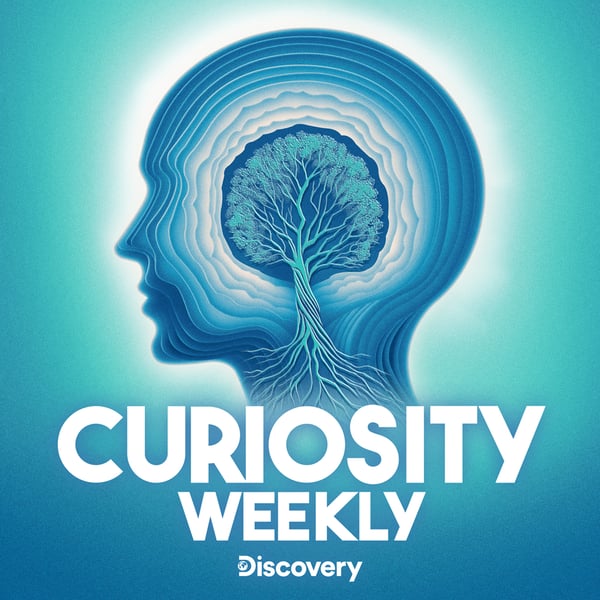“Rub Some Dirt on It” to Heal Wounds, Funny Memes Can Save Endangered Species, and Space Changes the Shape of Astronauts’ Hearts
Curiosity Weekly
Warner Bros. Discovery
4.6 • 935 Ratings
🗓️ 28 May 2020
⏱️ 10 minutes
🧾️ Download transcript
Summary
Learn about whether it’s a good idea to rub dirt on your wounds; how funny memes can help save endangered species like the proboscis monkey; and how space travel changes the shape of astronauts’ hearts.
When it comes to wounds, science says "rub some dirt on it" might be good advice by Cameron Duke
- Dillow, C. (2013, May 23). Got A Wound? Science Says Rub Some Dirt In It. Popular Science; Popular Science. https://www.popsci.com/science/article/2013-05/antibacterial-clays-can-kill-antibiotic-resistant-e-coli-and-mrsa/
- Juang, L. J., Mazinani, N., Novakowski, S. K., Prowse, E. N. P., Haulena, M., Gailani, D., Lavkulich, L. M., & Kastrup, C. J. (2020). Coagulation factor XII contributes to hemostasis when activated by soil in wounds. Blood Advances, 4(8), 1737–1745. https://doi.org/10.1182/bloodadvances.2019000425
- Otto, C. C., & Haydel, S. E. (2013). Exchangeable Ions Are Responsible for the In Vitro Antibacterial Properties of Natural Clay Mixtures. PLoS ONE, 8(5), e64068. https://doi.org/10.1371/journal.pone.0064068
- Soil in wounds can help stem deadly bleeding. (2020). EurekAlert! https://www.eurekalert.org/pub_releases/2020-04/uobc-siw042420.php
Funny memes can help people care about unpopular and unappealing species by Kelsey Donk
- The new Noah’s Ark: beautiful and useful species only. Part 1. Biodiversity conservation issues and priorities. (2011). Biodiversity. https://www.tandfonline.com/doi/full/10.1080/14888386.2011.642663
- Lenda, M., Skórka, P., Mazur, B., Sutherland, W., Tryjanowski, P., Moroń, D., Meijaard, E., Possingham, H. P., & Wilson, K. A. (2020). Effects of amusing memes on concern for unappealing species. Conservation Biology. https://doi.org/10.1111/cobi.13523
- Proboscis Monkey | National Geographic. (2010, November 9). Nationalgeographic.com. https://www.nationalgeographic.com/animals/mammals/p/proboscis-monkey/
- Proboscis monkey meme mentioned: Typowy Polak: Janusz Nosacz - Posts. (2018). Facebook.com. https://www.facebook.com/TypowyPolakJanuszNosacz/posts/1658533764253793/
Space Travel Changes The Shape of Astronauts' Hearts by Haley Otman
- Study Finds Astronauts’ Hearts Become More Spherical in Space - American College of Cardiology. (2014). American College of Cardiology. https://www.acc.org/about-acc/press-releases/2014/03/29/09/09/may-hearts-in-space
- May, C., Borowski, A., Martin, D., Popovic, Z., Negishi, K., Hussan, J. R., Gladding, P., Hunter, P., Iskovitz, I., Kassemi, M., Bungo, M., Levine, B., & Thomas, J. (2014). Affect of Microgravity on Cardiac Shape: Comparison of Pre- and In-Flight Data to Mathematical Modeling. Journal of the American College of Cardiology, 63(12), A1096. https://doi.org/10.1016/s0735-1097(14)61096-2
Subscribe to Curiosity Daily to learn something new every day with Cody Gough and Ashley Hamer. You can also listen to our podcast as part of your Alexa Flash Briefing; Amazon smart speakers users, click/tap “enable” here: https://www.amazon.com/Curiosity-com-Curiosity-Daily-from/dp/B07CP17DJY
Find episode transcript here: https://curiosity-daily-4e53644e.simplecast.com/episodes/rub-some-dirt-on-it-to-heal-wounds-funny-memes-can-save-endangered-species-and-space-changes-the-shape-of-astronauts-hearts
Hosted on Acast. See acast.com/privacy for more information.
Transcript
Click on a timestamp to play from that location
| 0:00.0 | Hi, you're about to get smarter in just a few minutes with Curiosity Daily from |
| 0:04.7 | Curiosity.com. I'm Cody Goth. And I'm Ashley Hamer. Today you learn about |
| 0:08.9 | whether it's a good idea to rub dirt on your wounds, how funny memes can help save endangered species, and how space travel |
| 0:15.7 | changes the shape of astronaut's hearts. |
| 0:18.2 | Let's satisfy some curiosity. |
| 0:20.6 | If you ever scraped your knees playing sports as a child, you probably remember a coach or a parent telling you to rub some dirt on it. |
| 0:27.5 | While they might not have meant it literally, it turns out that suggesting you rub dirt in a wound isn't actually the worst advice. |
| 0:34.8 | Dirt has been used medicinally for thousands of years, |
| 0:38.6 | and recent scientific evidence is beginning to show us why. |
| 0:41.8 | While it shouldn't be your first choice for wound care, |
| 0:45.0 | dirt does have properties that kill bacteria and clot blood. |
| 0:49.0 | Evidence suggests that as early as 5,000 years ago, people were using clays, which are really just a special type of dirt, to heal wounds and stop fluxes from the body, bleeding, basically. |
| 1:01.0 | The 3600-year-old E Ebers Papyrus, which is the earliest known medical |
| 1:05.8 | text, says something similar. That's because dry clay tends to act like a sponge, for one thing. |
| 1:12.0 | So it's great at absorbing blood and protecting wounds. But it also turns out that certain |
| 1:16.8 | types of clay have antibacterial properties. That's thanks to a particular group of metallic ions that bond themselves to the surfaces of clay particles. |
| 1:26.0 | One study found that clays high in ions of copper, zinc, cobalt, nickel, and iron are effective at killing both E. coli and MRSA. |
| 1:36.2 | Fair warning, though, not all clays have this perfect concentration of antimicrobial ions, |
| 1:41.2 | and some contain toxic metals like lead, mercury, and cadmium. |
| 1:46.0 | So some clays can hurt more than they help. |
| 1:49.0 | But clay isn't the only healing ingredient in dirt. Soililin also contains a ton of minerals called |
| 1:55.0 | silicates. There's recent evidence that these compounds can help stop bleeding. |
... |
Please login to see the full transcript.
Disclaimer: The podcast and artwork embedded on this page are from Warner Bros. Discovery, and are the property of its owner and not affiliated with or endorsed by Tapesearch.
Generated transcripts are the property of Warner Bros. Discovery and are distributed freely under the Fair Use doctrine. Transcripts generated by Tapesearch are not guaranteed to be accurate.
Copyright © Tapesearch 2025.

